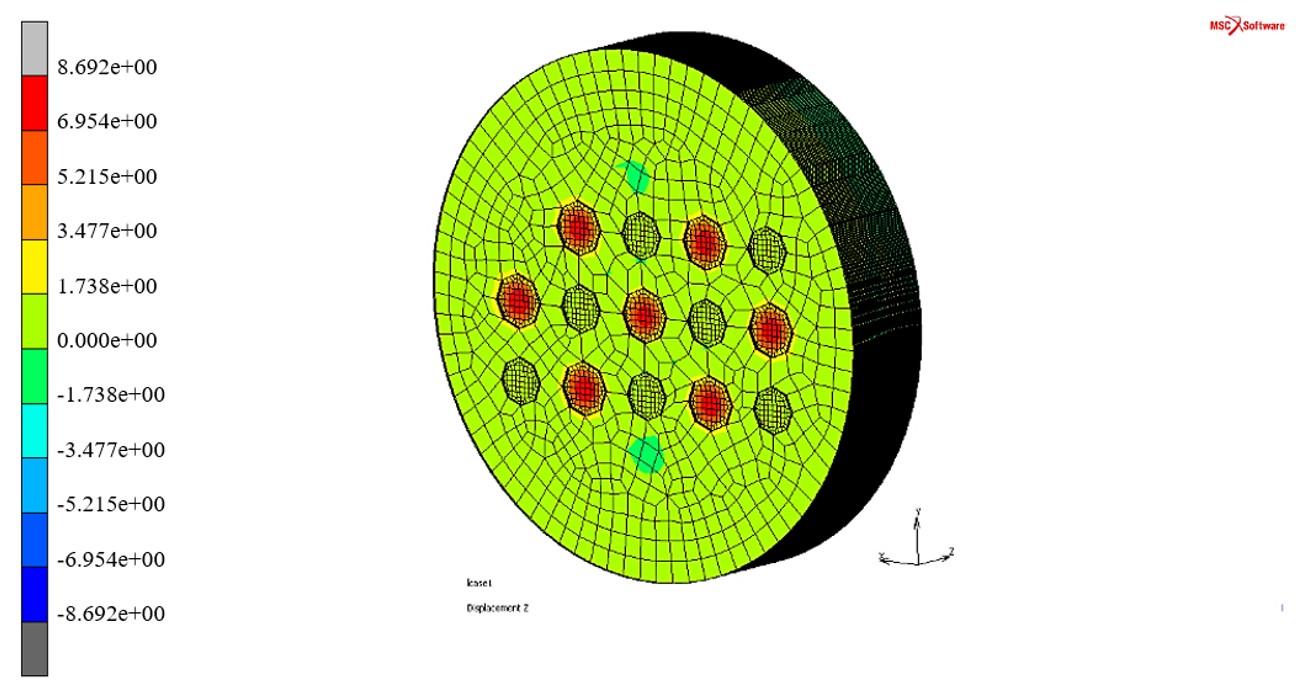Analysis of Motor Unit Recruitment in Human Skeletal Muscle Using Finite Element Method
Main Article Content
Abstract
Motor unit recruitment is an essential factor in understanding muscle behavior. Skeleton muscle is associated with force generation and transmission to perform daily activity. The present study aims to compare the number of motor units recruited in human skeleton muscle by finite element analysis. The finite element model is constructed based on the mechanism of the sarcomere. The geometry of the model is focused on the fascicle level which consists of many fibers and is enveloped with an endomysium sheet. Each subunit of fiber is compressible and elongated similar to the sliding filament theory. The fully instrumented model provides information on self-contraction and force distribution along the skeletal muscle. The result of contraction behavior from the finite element model can be applied to designing functional ankle-foot orthosis for various physiology of humans. Results show that the equal distribution of muscle fiber type in a single fascicle achieves the greatest outcome in isotonic contraction toward other activation patterns. The culmination of contraction behavior from the finite element model can be applied to designing functional ankle-foot orthosis for various physiology of humans.
Article Details

This work is licensed under a Creative Commons Attribution-NonCommercial-ShareAlike 4.0 International License.
This work is licensed under a Creative Commons Attribution-NonCommercial-ShareAlike 4.0 International License.
References
Gotti C, Sensini A, Zucchelli A, Carloni R, Focarete ML. Hierarchical fibrous structures for muscle‐inspired soft‐actuators: a review. Appl Mater Today. 2020;20:100772.
Squire JM. Muscle contraction: sliding filament history, sarcomere dynamics and the two Huxleys. Glob Cardiol Sci Pract. 2016;11:1-23.
Oomens CWJ, Maenhout M, van Oijen CH, Drost MR, Baaijens FP. Finite element modeling of contracting skeletal muscle. Philos Trans R Soc Lond B Biol Sci. 2003;358(1437):1453-1460.
Teklemariam A, Hodson-Tole E, Reeves ND, Cooper G. A micromechanical muscle model for determining the impact of motor unit fiber clustering on force transmission in aging skeletal muscle. Biomech Model Mechanobiol. 2019;18(5):1401-1413.
Marcucci L, Reggiani C, Natali AN, Pavan PG. From single muscle fiber to whole muscle mechanics: a finite element model of a muscle bundle with fast and slow fibers. Biomech Model Mechanobiol. 2017;16(6):1833-1843.
Feher J. 3.5-Contractile mechanisms in skeletal muscle. Quantitative Human Physiology. 2nd ed. London: Academic Press; 2017. p. 305-317.
Penney S. Fast-twitch vs. slow-twitch muscle fiber types + training tips [Internet]. 2021 [cited 2022 Dec 7]. Available from: https://blog.nasm.org/fitness/fast-twitch-vs-slow-twitch.
Meznaric M, Cvetko E. Size and proportions of slow-twitch and fast-twitch muscle fibers in human costal diaphragm. Biomed Res Int. 2016;2016:5946520.
Purslow PP, Trotter JA. The morphology and mechanical properties of the endomysium in series-fibred muscles: variations with muscle length. J Muscle Res Cell Motil. 1994;15(3):299-308.
Astruc T. Connective tissue: structure, function, and influence on meat quality. In: Dikeman M, Devine C, editors. Encyclopedia of Meat Sciences. London: Academic Press; 2014. p. 321-328.
Lamsfuss J, Bargmann S. Skeletal muscle: modeling the mechanical behavior by taking the hierarchical microstructure into account. J Mech Behav Biomed Mater. 2021;122:104670.
Hexagon. Marc and Mentat documentation: release 2020 [Internet]. 2020 [cited 2022 Dec 7]. Available from: https://simcompanion.hexagon.com/customers/s/article/Marc-Documentation-Release-2020.
Neumann DA. Kinesiology of the musculoskeletal system. 3rd ed. Maryland Heights: Mosby; 2016.



